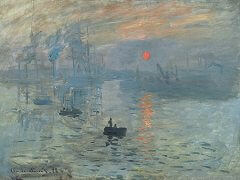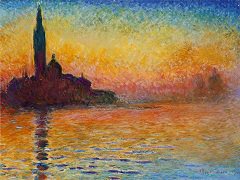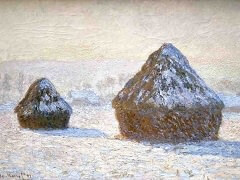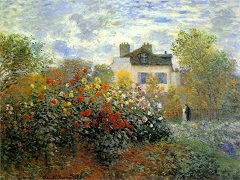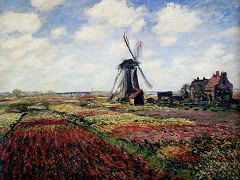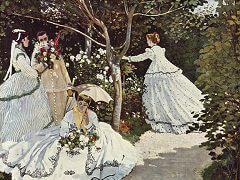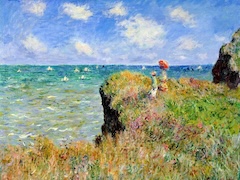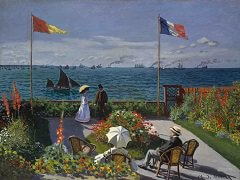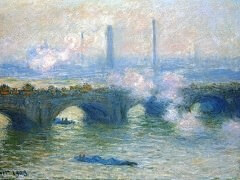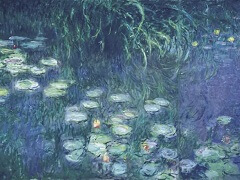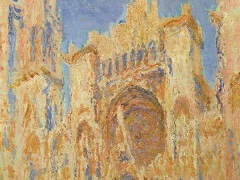The Beach at Sainte-Adresse, 1867 by Claude Monet
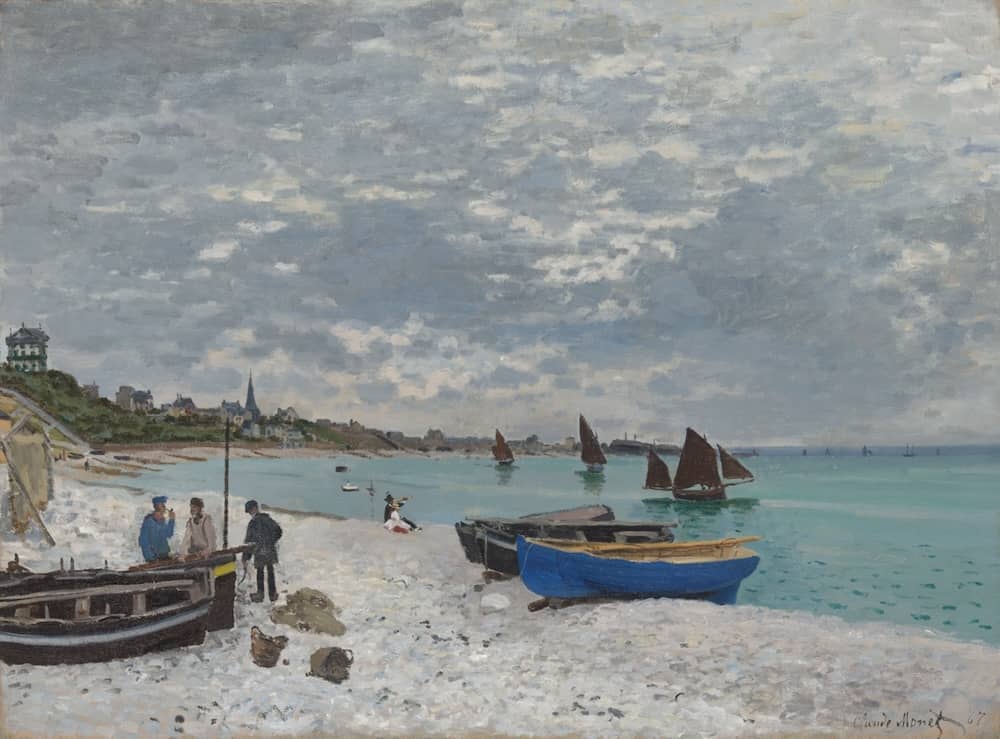
Monet's landscapes from the second half of the 1860's were in every sense ahead of their time. He was only twenty-seven years old - a young artist seeking conventional success at the Salon - when he painted The Beach at Sainte-Adresse, a thoroughly unconventional landscape. Because his work was rejected frequently by Salon juries in the 1860's, it is certainly no accident that he did not attempt to publicly exhibit this painting until the second Impressionist exhibition, in 1876, when it was nearly ten years old.
This provocative landscape is based loosely on the paintings of Eugene Boudin, Monet's teacher during the first half of the 1860's. Both artists painted everyday beach scenes along the Normandy coast where they lived. Monet's aunt maintained a house at Sainte-Adresse just at the time the town was being transformed from a traditional fishing village to a suburb of nearby Le Havre, whose factory chimneys can be seen in the background of this seascape. The artist painted two identically sized canvases of this beach in 1867. This painting is owned by The Art Institute of Chicago, the other is owned by The Metropolitan Museum of Art, New York. Although there is no documentary evidence that they were intended as a pair, they both seem to contrast the modern bourgeois world of suburban Sainte-Adresse and the traditional working world of the fishing village from which it had evolved.
The Art Institute picture represents a cold, gray day on a beach presided over by fishermen and their boats, while the Metropolitan painting shows a regatta of sailboats being watched by bourgeois spectators at leisure. In each painting, Monet may have been commenting on these class differences. He placed a colorful bourgeois couple in the middle ground of Beach at Sainte-Adresse, looking at the sea through a brass telescope and navigating two miniature boats. The contrast between the fishermen with their rough wooden boats and the bourgeoisie with their expensive toys is compelling.

